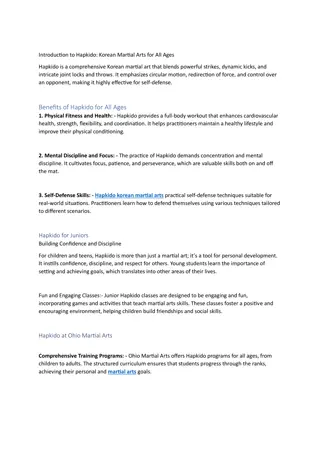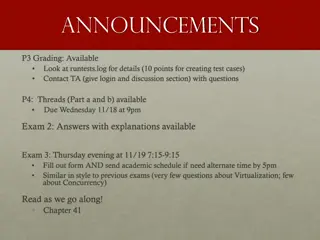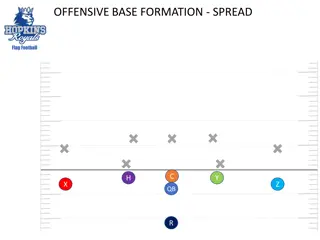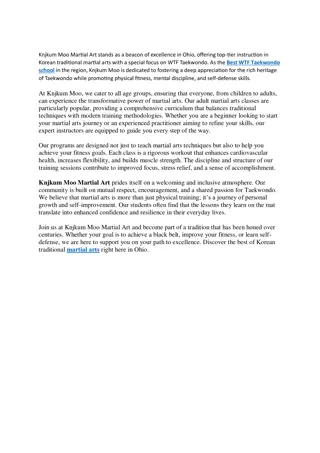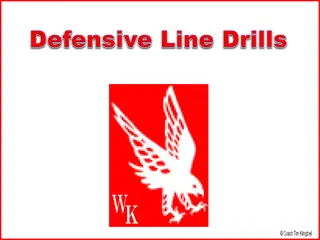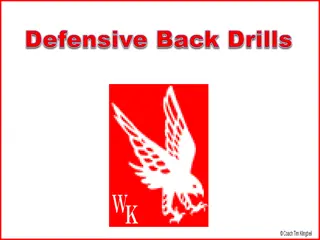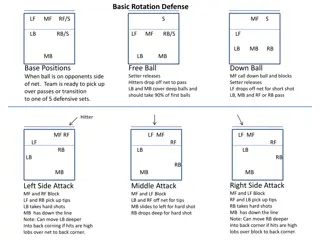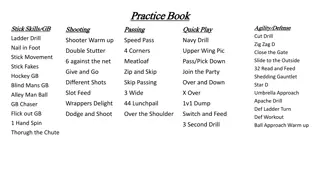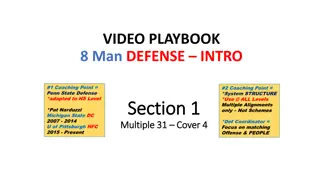Taekwondo Techniques and Blocks: Defensive Moves in Action
Explore Taekwondo techniques such as the Down Block, X-Block, Knife-Hand Block, and Double Knife-Hand Block, used for defense against different types of attacks in martial arts. Detailed descriptions and illustrations demonstrate how to execute these blocks effectively to protect various parts of the body during combat. Enhance your understanding of self-defense strategies through these fundamental techniques.
Uploaded on Sep 10, 2024 | 4 Views
Download Presentation

Please find below an Image/Link to download the presentation.
The content on the website is provided AS IS for your information and personal use only. It may not be sold, licensed, or shared on other websites without obtaining consent from the author.If you encounter any issues during the download, it is possible that the publisher has removed the file from their server.
You are allowed to download the files provided on this website for personal or commercial use, subject to the condition that they are used lawfully. All files are the property of their respective owners.
The content on the website is provided AS IS for your information and personal use only. It may not be sold, licensed, or shared on other websites without obtaining consent from the author.
E N D
Presentation Transcript
YAAR DOU SPOR B L MLER FAK LTES ANTREN RL K E T M / L SANS ANT188-Se meli III ( Taekwondo E itimi ) Do . Dr. Y ld r m KAYACAN
Msabaka esnasnda en ok kullan lan bloklar n uygulanmas ANT188-Se meli III ( Taekwondo E itimi ) Hafta-15
Down Block: The blocking arm is first raised to the opposite side of the head with the palm turned toward the ear (A), then swept down and across the front of the body to stop with the fist before the center of your belt and the forearm angling downward at approximately 45 degrees (B). The blocking surface is the outer forearm. The technique is a de- fense against attacks to the middle and lower sections of the body.
C D A B
X Block: Draw both hands back into position at the side of the body, then shoot arms forward at the same time to cross at the wrists. The blocking surface is the area between the wrists where the forearms cross. Illustrations (A,B) show a high X block, and illustrations (C,D) show a low X block. The low X block is a defense against attacks to the lower body, in particular the groin, while the high X block is a defense against downward attacks to the head and shoulders and attacks to the face.
Knife-Hand Block: Blocking hand forms a knife-hand position* and is brought to the opposite side of the head (A), then snapped out to cross in front of the face and stop palm out with the hand in line with that shoulder (B). Blocking surface is the edge of the hand. This is a de- fense against direct oncoming attacks to the face and upper body. This technique may also be performed to protect the lower body areas, as in illustrations (C,D).
Double Knife-Hand Block: Both hands form knife-hands as blocking hand is brought up beside the head while the rear hand is extended to the back (A), then both hands are swung forward so that the lead hand stops palm out in line with the shoulder as the rear hand stops palm up before the solar plexus (B). Blocking surface is the edge of the lead hand. This technique is a defense against direct oncoming attacks to the head and upper body with additional covering protection for the solar plexus provided by the rear hand. This technique may also be performed to protect the lower areas, as in illustrations (C,D).
Outer Arm Block: Extend the blocking arm straight across the front of your body (A), then swing it upward and in front of your face (B) until the arm stops with forearm in line with the shoulder of that arm (C). The blocking surface is the inner forearm bone. This is a defense against direct oncoming attacks to the face and upper body.
Reverse Outer Arm Block: Bring blocking arm to opposite side of head (A), then swing forearm across face (B) until arm stops in line with the same shoulder (C). Note that the palm is returned away from the face. Blocking surface is the outer forearm bone. This is a defense against direct oncoming attacks to the face
Rising Block: Cross both arms in front of the body (A), then thrust the blocking arm upward in front of the face until it stops approximately one fist s distance above the top of the head with the forearm angling upward at about 45 degrees (B).At the same time, the nonblocking arm is retracted into position at your belt.* Note that the forearm, which is the blocking surface, covers the entire head area. This is a defense against a downward attack to the head and shoulders or a direct attack to the face.
C D A B
X Block: Draw both hands back into position at the side of the body, then shoot arms forward at the same time to cross at the wrists. The blocking surface is the area between the wrists where the forearms cross. Illustrations (A,B) show a high X block, and illustrations (C,D) show a low X block. The low X block is a defense against attacks to the lower body, in particular the groin, while the high X block is a defense against downward attacks to the head and shoulders and attacks to the face.
Inner Arm Block: Raise your bent arm to the side of the head (A), then swing it forward and to the inside (B) until the forearm crosses before your face to stop in line with the opposite shoulder (C). The blocking surface is the outer forearm bone. This is a defense against direct on- coming attacks to the head and upper body.
Knife-Hand Block: Blocking hand forms a knife-hand position* and is brought to the opposite side of the head (A), then snapped out to cross in front of the face and stop palm out with the hand in line with that shoulder (B). Blocking surface is the edge of the hand. This is a de- fense against direct oncoming attacks to the face and upper body. This technique may also be performed to protect the lower body areas, as in illustrations (C,D).
Double Knife-Hand Block: Both hands form knife-hands as blocking hand is brought up beside the head while the rear hand is extended to the back (A), then both hands are swung forward so that the lead hand stops palm out in line with the shoulder as the rear hand stops palm up before the solar plexus (B). Blocking surface is the edge of the lead hand. This technique is a defense against direct oncoming attacks to the head and upper body with additional covering protection for the solar plexus provided by the rear hand. This technique may also be performed to protect the lower areas, as in illustrations (C,D).


